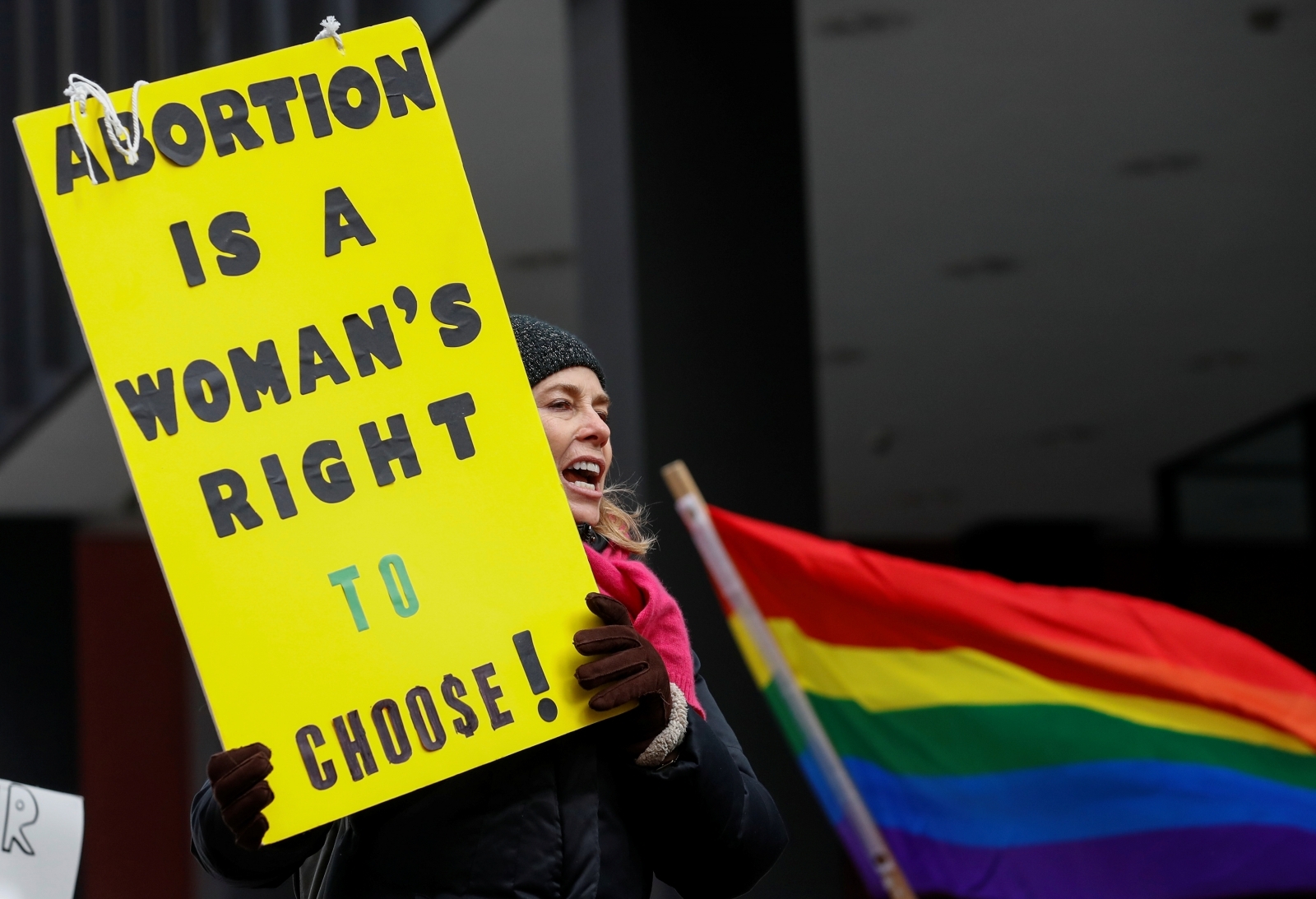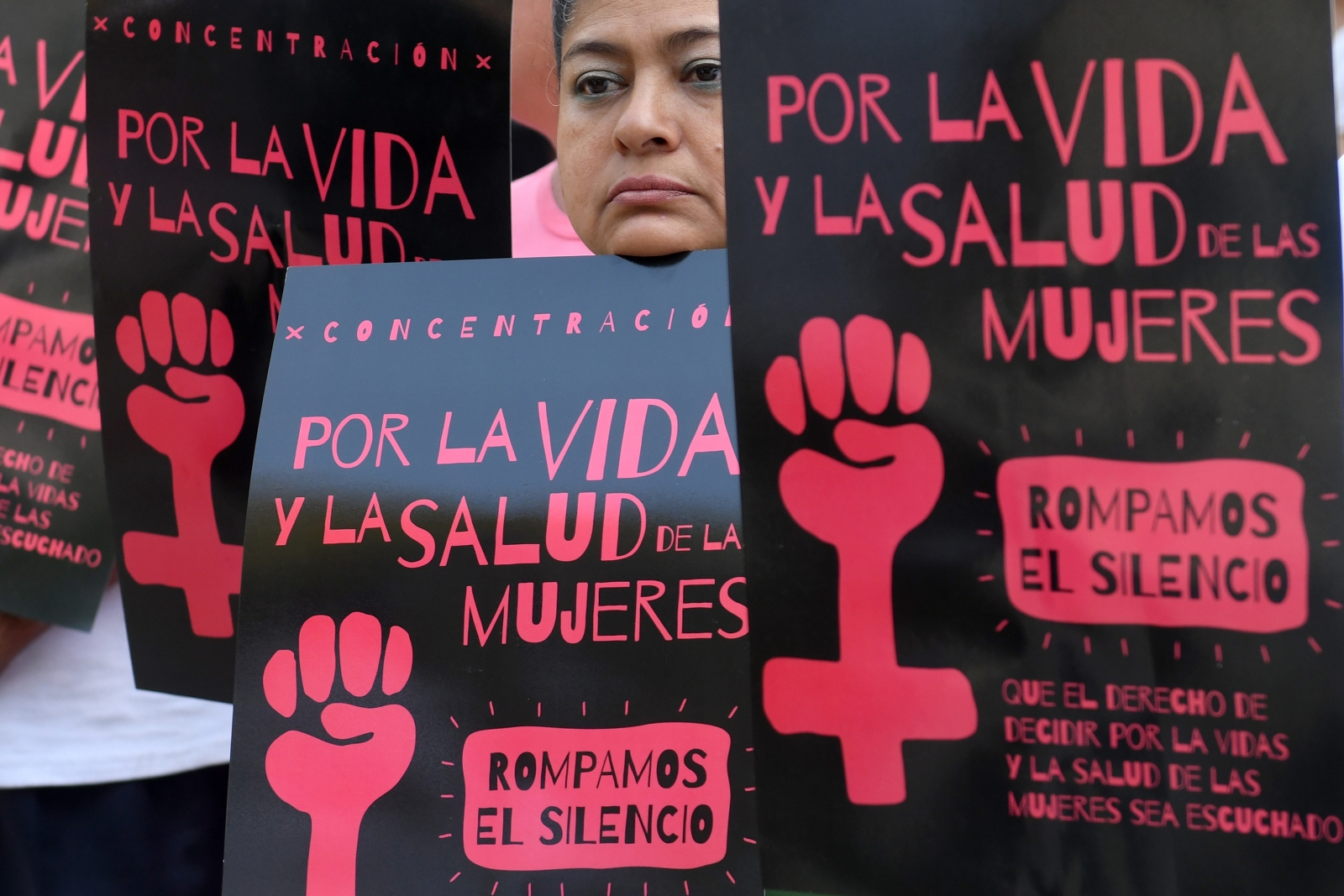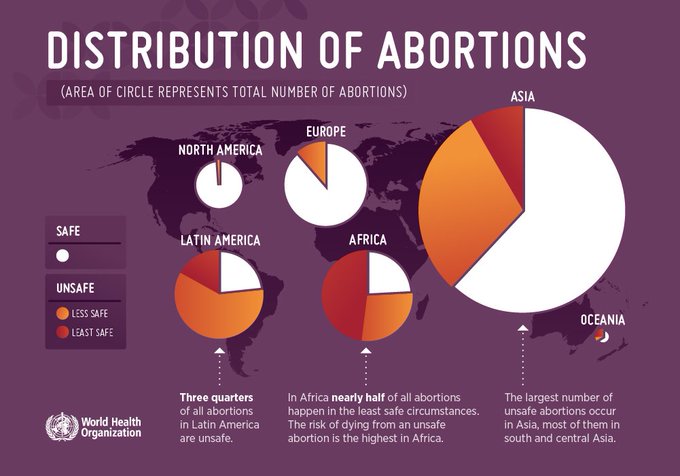97% of procedures carrying serious risk are performed in developing countries.
 Anti-Trump demonstrator protests at abortion rights rally in Chicago, Illinois on 15 January 2017REUTERS/Kamil Krzaczynski
Anti-Trump demonstrator protests at abortion rights rally in Chicago, Illinois on 15 January 2017REUTERS/Kamil Krzaczynski
Nearly half of the estimated 55.7 millions abortions carried out around the world each year are performed unsafely, a new study in medical journal The Lancet has revealed.
Between 2010 and 2014, 25 million abortions each year posed a serious risk to the lives of pregnant women worldwide, with 97% of unsafe abortions occurring in developing countries in Asia, Africa and Latin America, according to the report.
The World Health Organisation (WHO) defines an abortion as unsafe when it is terminated by someone who lacks the necessary medical skills to carry out the procedure or when it takes place in an environment that does not the meet the minimum medical standards.
The Lancet study reviewed data on abortions from 61 countries, categorising them on a scale of "safe" to "least safe".
"The vast majority in the Latin America region were performed under less safe conditions (59.7%) while in Africa the majority of unsafe abortions were performed under the least safe conditions (48%)," said Dr. Bela Ganatra, the study's lead author.
"It is also important to note that women undergoing abortions in Africa had the highest risk of dying from a least safe abortion," she added. In south-central Asia less than half abortions were classed as safe.
When women & girls cannot access effective contraception & safe abortion services, there are serious consequences for their own health.
Around the world, too many unsafe abortions still occur, and too many women continue to suffer and die http://bit.ly/2fzzI9O pic.twitter.com/CFSYRomrtn
Around seven million women worldwide are admitted to hospital every year after their unsafe abortion leads to serious complications, including heavy bleeding, infection, and damage to the genitals. In some cases, the pregnancy tissue is not removed completely from the uterus, resulting in an incomplete abortion.
"I think that there's no question that unsafe abortion continues to be one of the leading causes of maternal mortality and morbidity, and importantly this is preventable," Dr Lisa Haddad, an obstetrician-gynaecologist who has worked at clinics in sub-saharan Africa, told CNN.
While working in Zambia, she saw many women with serious infections and suffering from heavy bleeding as a result of having an unsafe abortion.
"This is a public health priority and I don't think it's been placed on that level and given the attention that it needs," she said.
Tarik Jašarević, a spokesman for the WHO, told IBTimes UK that unsafe abortions persist in many parts of the world despite the fact that safe termination procedures can "easily be provided at primary care level by a simple outpatient procedure or by using tablet".
 Salvadoran women take part in a demonstration to demand the decriminalization of abortion, outside the Legislative Assembly in San Salvador on 23 February 2017GettyImages/MARVIN RECINOS
Salvadoran women take part in a demonstration to demand the decriminalization of abortion, outside the Legislative Assembly in San Salvador on 23 February 2017GettyImages/MARVIN RECINOS
Safe abortion care is not impossible to achieve in developing countries, Ganatra said, pointing out that Nepal, Uruguay and Ethiopia have made great progress in expanding access to abortion services in recent years.
Jašarević said that a lack of trained providers, stigma and legal barriers prevent many women from being able to access safe abortion procedures. Unsafe abortions are unsurprisingly much more common in countries where laws restrict women from terminating a pregnancy.
Only one in four abortions were classed as "safe" in countries where abortion is completely banned or only permitted when the pregnant woman's life is at risk, according to The Lancet study. In countries where abortion is legal, nine in 10 abortions were reviewed as safe.
Restricting access to termination procedures does not reduce the number of abortions, the study concluded.





No comments:
Post a Comment